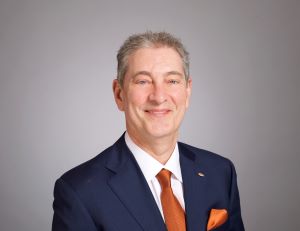Safeguarding the Future of Endodontics
 Last year, I attended my first Educators Conference. Go figure, by chance more than design, I found myself in a room full of educators. ENDOPALOOZA, as we fondly call it, is the joint gathering of the Educators Conference and the APICES Conference for residents, held in conjunction with one another annually.
Last year, I attended my first Educators Conference. Go figure, by chance more than design, I found myself in a room full of educators. ENDOPALOOZA, as we fondly call it, is the joint gathering of the Educators Conference and the APICES Conference for residents, held in conjunction with one another annually.
My presence in the Educators Conference wasn’t planned. I had been invited to APICES in my role as President-Elect, with no speaking responsibilities—just an opportunity to observe. On that first morning, before the residents arrived, I wandered into the Educators session. It was a lively conversation among Pre-Doctoral Directors, complete with a ball-tossing exercise where whomever caught the ball had to answer the moderator’s question. Within minutes of sitting down, the ball landed in my hands.
I don’t remember the exact question, but I remember how I began my response: “I’m not really an educator, but…” That’s when my colleague and friend, Dr. Mark Byron of West Virginia University, quickly interrupted me. Though I teach at WVU just one day a month—six to eight times a year at best—he looked at me and said: “Yes, you are an educator, and we are happy to have you whenever you can come.”
That message was loud and clear—not just from Dr. Byron, but from the entire room. Almost every institution is in need of endodontists to teach. And any endodontist willing to give their time, even in small amounts, is both welcomed and needed.
A Shortage We Can’t Ignore
Fast forward to this past August, when ENDOPALOOZA 2025 took us to steamy New Orleans for the 22nd annual APICES Conference. This year’s Educators Conference also welcomed department chairs and, as happens every other year, invited our corporate partners to participate.
Now attending in my role as President, I had speaking responsibilities in nearly every session. The first group I addressed were our corporate stakeholders—companies deeply invested in the health of our specialty. Their chief concern mirrored what I had heard the year before: Where do we find more educators?
In the Educators Workshop, the refrain was the same: There is a significant shortage of endodontist educators at every level, in nearly every institution. President-Elect Dr. Craig Noblett had proposed a survey to identify unmet needs. The results confirmed what many of us suspected: Most institutions have open positions for full-time pre-doctoral directors, graduate program chairs, and department heads. Some institutions face vacancies in all three.
Inspiring the Next Generation
The next day, I addressed our residents. I spoke about the value of the AAE, the importance of belonging to a strong professional organization, and the many ways we support members at every stage of their careers. I reminded them that the AAE’s strength depends on the leadership of our younger members. But I also emphasized something even more fundamental: the responsibility to give back.
To give back to our profession, to our Foundation, and—most importantly—to our students. Because if we fail to provide robust endodontic education at every level, if we lose the ability to shape the narrative and convey the importance of our specialty, then we risk losing endodontics itself.
A Clear Path Forward
I wish I could offer a simple solution. I cannot. There is no easy fix. The systemic issues of funding and institutional politics are real and will not be solved overnight. But what we can do—what each of us must do—is address the challenge personally.
Most of us can volunteer a half day or a few days here and there. And if you think back to your own training, chances are it was the volunteer faculty who made the deepest impression. Practicing endodontists who may not have considered themselves “teachers,” but who showed up, shared their experiences, and helped shape us into the professionals we are today. They modeled the realities of practice, offered wisdom beyond textbooks, and shaped our professional identities.
Our Turn to Step Up
The future of endodontic education doesn’t rest solely on full-time faculty or department chairs. It rests with every member of our specialty. Each of us has benefitted from those who gave their time to teach us, and now we carry both the privilege—and the responsibility—to do the same for the next generation.
I no longer say, “I’m not really an educator.” Because being an educator isn’t defined by a title or a contract. It’s defined by the willingness to share what you know, to mentor those coming after you, and to safeguard the future of our specialty.
So I leave you with this: Be the person who shows up. If each of us contributes to the greater good of the profession, together we can shape the brightest future for endodontics.
